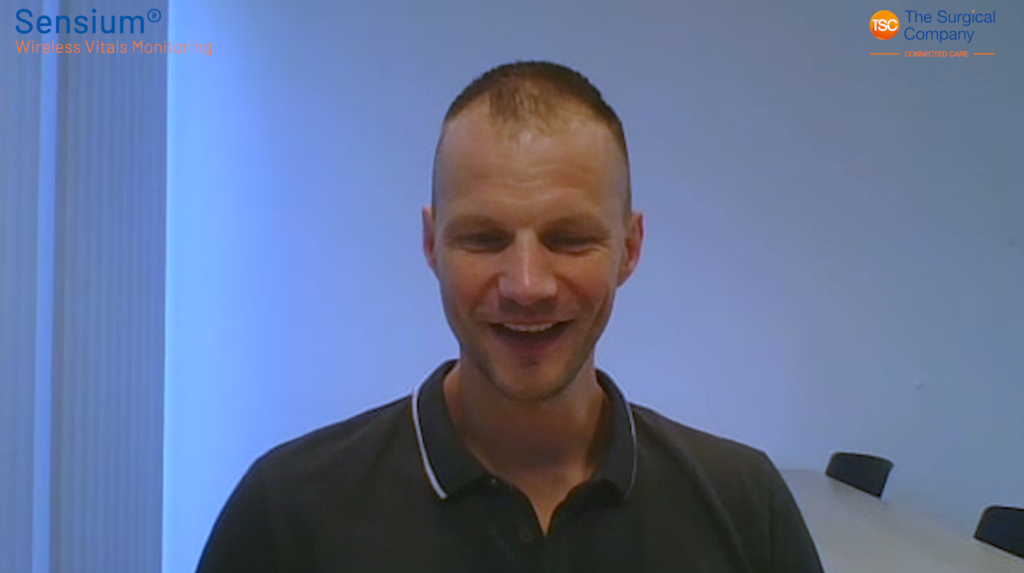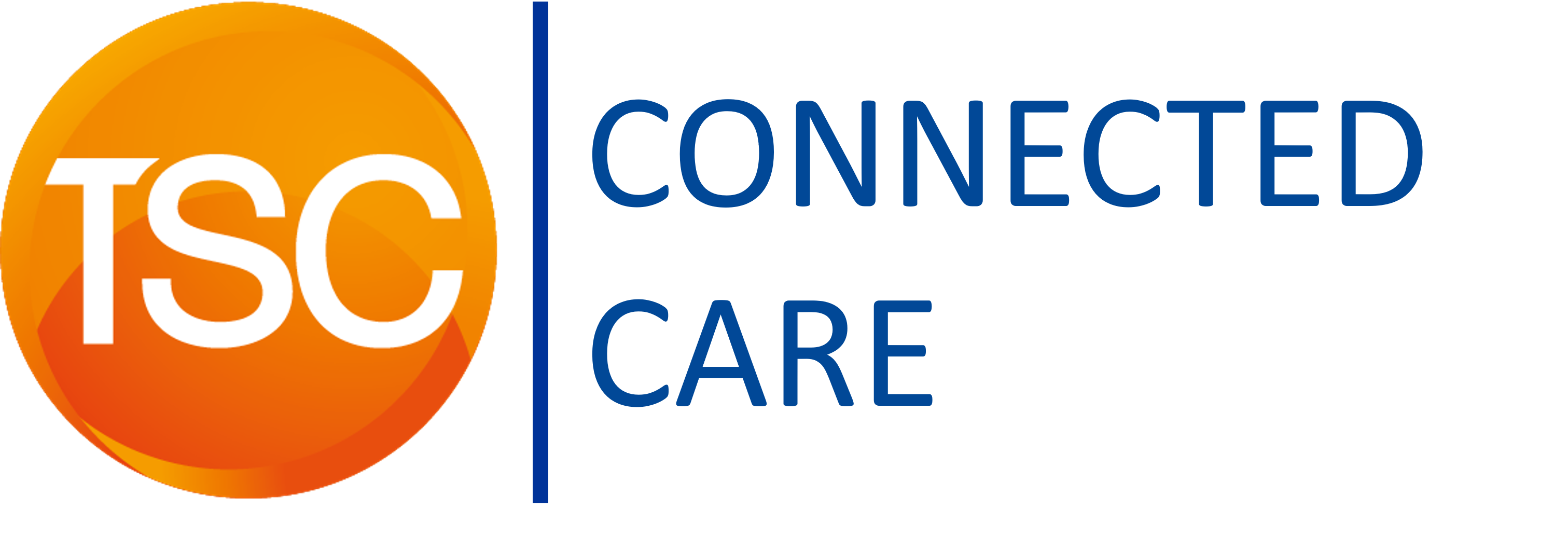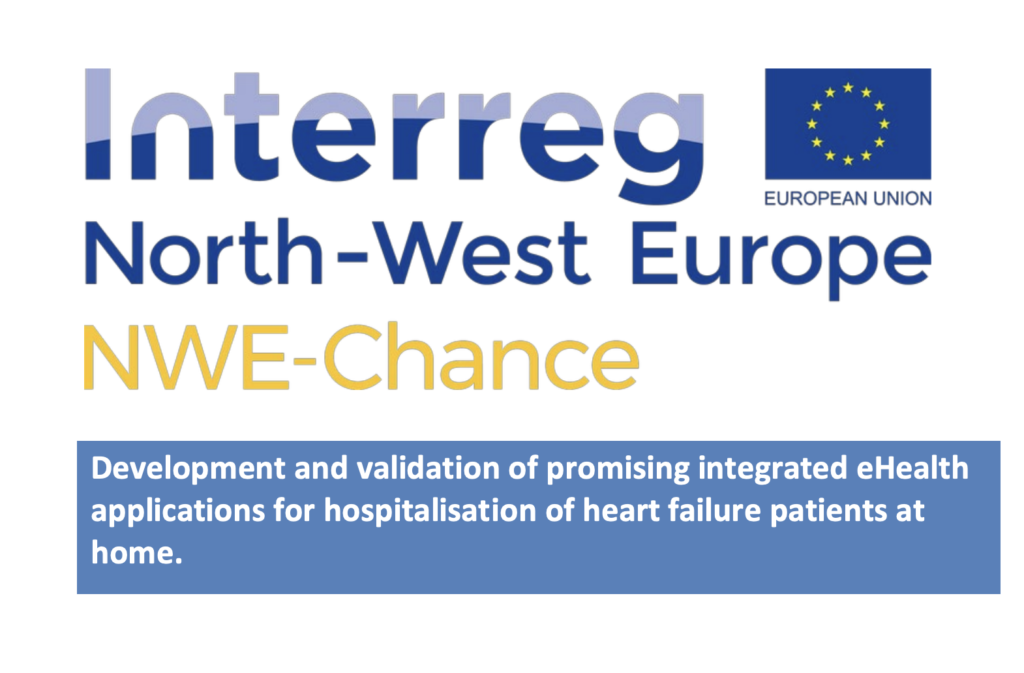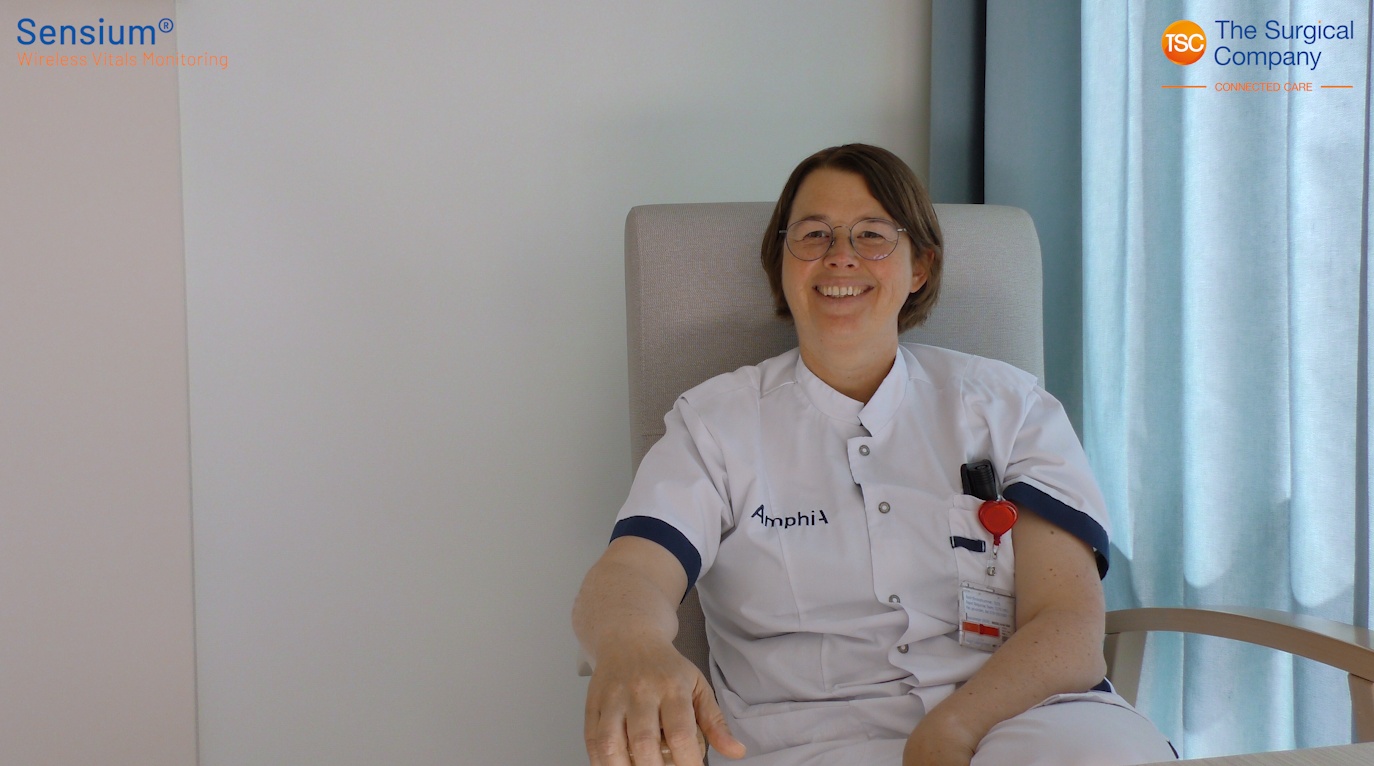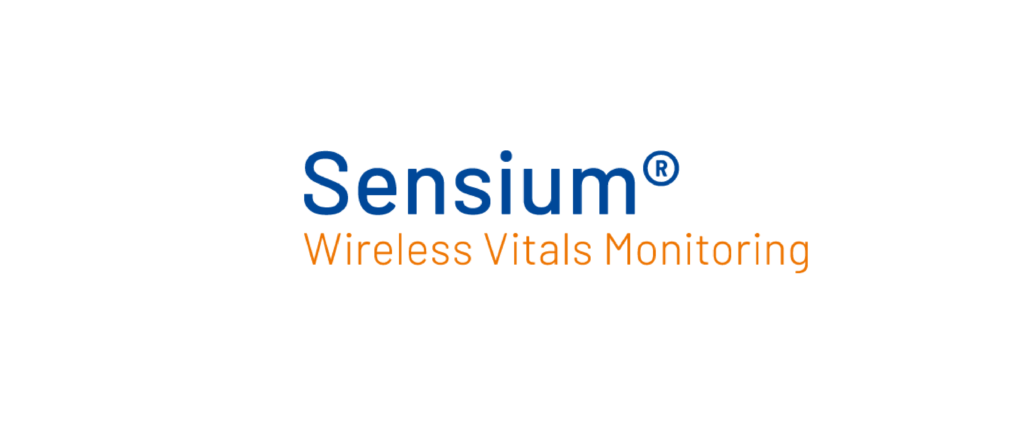Background and aim:
In this time of COVID more than ever, for heart failure patients being hospitalised safely at home is often more attractive than being admitted to hospital. NWE-Chance focuses on admitting and treating patients who are recovering from heart failure at home.
The project aims to discover the sustainablity of hospital at home, aessessing costs and the quality of life and patienty safety.
The pilot was done on 100 patients, and average duration od treatments and follow-up is five days. Three hospitals were included in the study.
Key achievements
There are five major achievements so far
- An operational blueprint has been successfully established. patient pathways identified in this can be used across many patient groups, not only heart patients
- The complete platform, in which the Sensium system plays a vital part, has been successfully put together. The Sensium patch will be used, amongst other things, for activity and posture.
- Nurses have been trained successfully and rapidly. At the end of the training day, nurses felt sufficiently prepared to monitor patients at home with this new integrated platform. One of them reported, “It’s great to follow patients from a distance. The system provides me with extra information, which can be used to advise them adequately”.
- In addition to the vital measurements, the eCoaching platform is also in place, providing patient/clinician contact several times a day.
- The first patients have been selected and sent home and have been extremely positive about the hospita@home monitoring.
The feedback from the Jessa patients is very positive; they really love the home hospitalisation intervention. “The home hospitalisation gave me a reassuring feeling,” one of them said. Many patients feel reassured because they know that their information is being sent to the hospital. When hospitalised at home, they worry less about their clinical condition. The feedback from nurses is also upbeat: “It’s a nice and good way to follow up a heart failure patient and especially to react quickly in the acute phase of the heart failure decompensation.”
Feedback from MUMC: So far, patients are very enthusiastic about the home hospitalisation: “I am happy to stay at home. I really trust the heart failure nurses, since I know them very well. I can tell you that I feel very safe.” And, to date, the feedback from the nurses is also positive: “This is a very nice solution for patients who are often admitted in the hospital, like our patients. The impact of admission is very mild since patients can stay at home.”
As in Jessa and MUMC+, nurses from Isala often hear from the patients that it is reassuring to be closely monitored. They confirm that “the measured values are well validated”.
Next steps
The project will assess the economic impact by using the MAFEIP tool, as well as trying to build the NWE-Chance innovation hub in which collaborators can share insights and analytics.A core endeavour of NWE-Chance is to make the Digital Innovation Hub the “go-to place” for hospitalisation@home.
